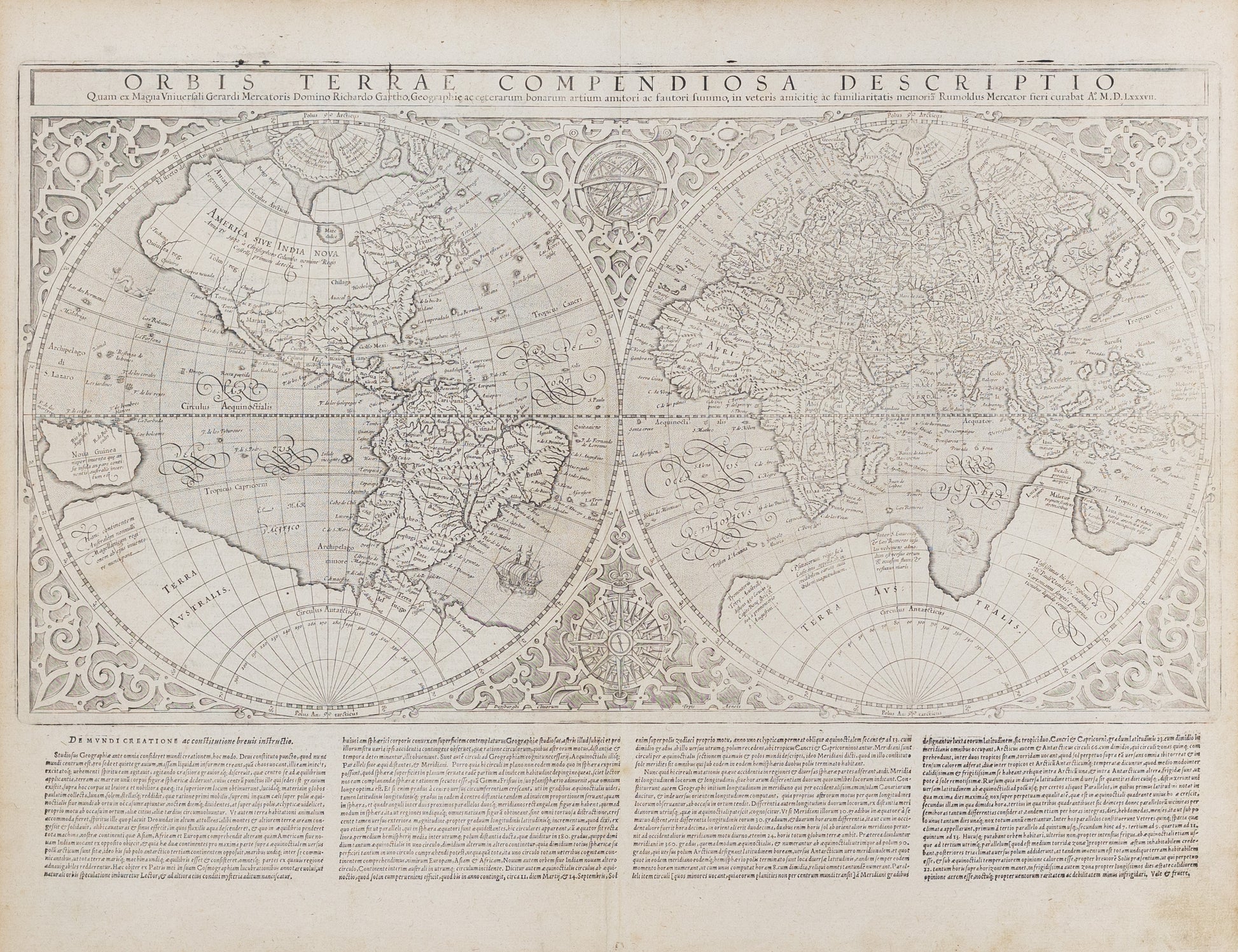from: 1016 Map Inventory
Mercator, Rumold (1545-1599). Orbis Terrae Compendiosa Descriptio [World Map]. 1587.
Mercator, Rumold (1545-1599). Orbis Terrae Compendiosa Descriptio [World Map]. 1587.
Couldn't load pickup availability
Rumold Mercator (1545–1599)
Orbis Terrae Compendiosa Descriptio
Duisburg, 1587
Copperplate engraving
This finely engraved double-hemisphere world map by Rumold Mercator, son of the great Gerard Mercator, is a landmark in 16th-century cartography. Published in 1587, it distills the geographical knowledge and cosmographic theories of the Renaissance into a beautifully balanced and symmetrical form, serving as a visual capstone to the Mercator family's influence on mapmaking.
Drawn from the elder Mercator’s seminal 1569 world map, this version omits the complex grid of rhumb lines in favor of decorative clarity and classical elegance. The two hemispheres are framed by strapwork and compass roses, embodying the ornamental style of the late Renaissance. Geographically, the map captures the Age of Discovery in mid-stride: North and South America are present but still imperfectly understood, with exaggerated projections and distorted coastlines. A speculative Northwest Passage is suggested across the Canadian Arctic, reflecting persistent European hopes for a direct route to Asia.
The massive, mythic continent of Terra Australis looms across the southern hemisphere, a holdover from Ptolemaic geography and Renaissance speculation that such a landmass was needed to “balance” the globe. Africa and Asia are relatively well-rendered, though Southeast Asia and Japan retain schematic outlines, and the Pacific remains largely mysterious. Australia and Antarctica, still undiscovered by Europeans, are absorbed into the imagined southern land.
This map is not merely geographical—it is cosmological. At the bottom, a dense Latin text discusses creation, divine order, and the reasoning behind the Earth's design. As such, the map is not just a record of land and sea, but a worldview—a Renaissance vision of human and divine order mapped onto the sphere of the Earth.
![Mercator, Rumold (1545-1599). Orbis Terrae Compendiosa Descriptio [World Map]. 1587.](http://aradernyc.com/cdn/shop/files/MB0493.jpg?v=1750447383&width=1445)

